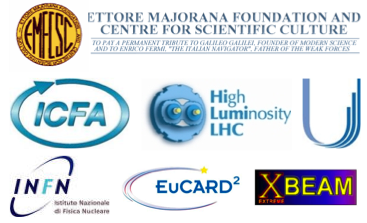Scientific and commercial applications of particle accelerators require ever higher performance in the sense of large beam current, small momentum spread, high repetition rate, small emittance and other beam characteristics... The stringent requirements of new and more sophisticated experiments and applications may conflict with beam stability and quality because of the strong electromagnetic interaction of the beam current with the surrounding equipment.
An awareness of the importance of these interactions gradually emerged in the 1960s. In 1966, they were put on a firmer conceptual basis with the introduction of the concept of the impedance of an accelerator.
Nowadays accelerator designers are keenly aware of the need to manage their “impedance budget” in order to avoid instabilities and other undesirable consequences. Large values of the Accelerator Impedance influence the motion of trailing particles, in the longitudinal and transverse directions, leading to energy loss, beam instabilities, or secondary effects such as excessive heating of sensitive components at or near the chamber wall (the so-called beam-induced RF heating).
Beam-induced RF heating has been observed in many places, for instance in several CERN LHC components during the 2011 and 2012 runs when the bunch/beam intensity was increased and/or the bunch length reduced. This caused beam dumps and delays in operation (reducing integrated luminosity) as well as considerable damage to some equipment.
These limitations could be more severe in future operation. Hence, the importance of gathering experts on the electromagnetic interaction between a particle beam and its surrounding environment to review all the recent activities and progress in theory, simulations, bench and beam-based measurements with a view to tackling these challenges.
An awareness of the importance of these interactions gradually emerged in the 1960s. In 1966, they were put on a firmer conceptual basis with the introduction of the concept of the impedance of an accelerator.
Nowadays accelerator designers are keenly aware of the need to manage their “impedance budget” in order to avoid instabilities and other undesirable consequences. Large values of the Accelerator Impedance influence the motion of trailing particles, in the longitudinal and transverse directions, leading to energy loss, beam instabilities, or secondary effects such as excessive heating of sensitive components at or near the chamber wall (the so-called beam-induced RF heating).
Beam-induced RF heating has been observed in many places, for instance in several CERN LHC components during the 2011 and 2012 runs when the bunch/beam intensity was increased and/or the bunch length reduced. This caused beam dumps and delays in operation (reducing integrated luminosity) as well as considerable damage to some equipment.
These limitations could be more severe in future operation. Hence, the importance of gathering experts on the electromagnetic interaction between a particle beam and its surrounding environment to review all the recent activities and progress in theory, simulations, bench and beam-based measurements with a view to tackling these challenges.




